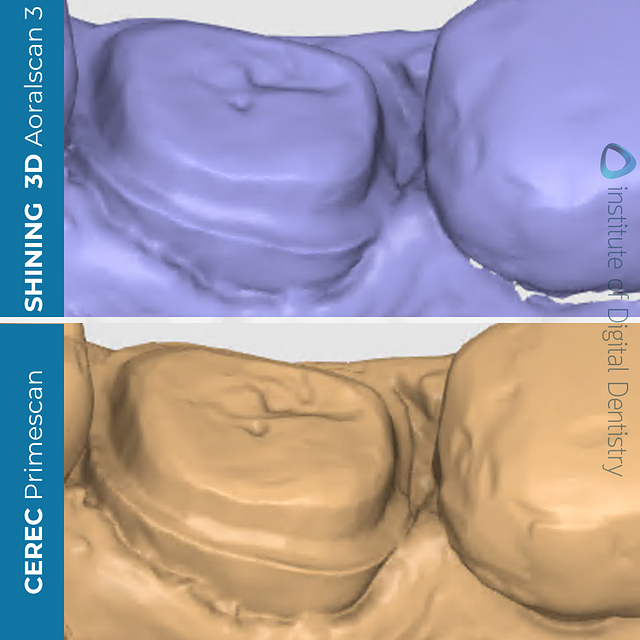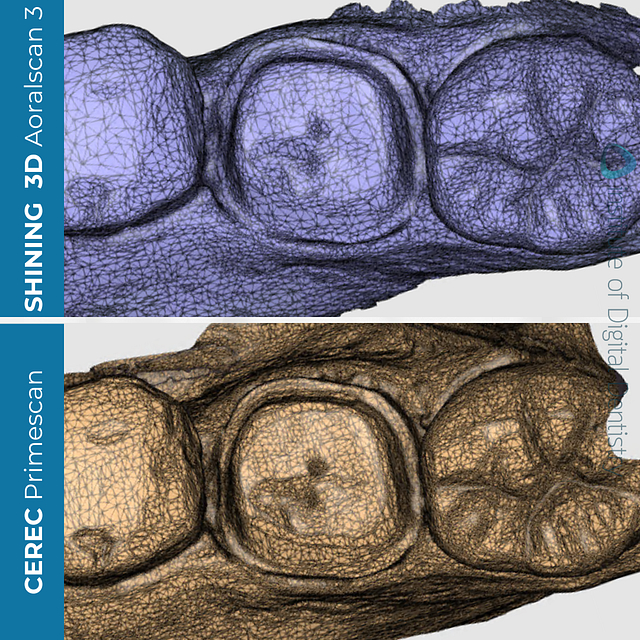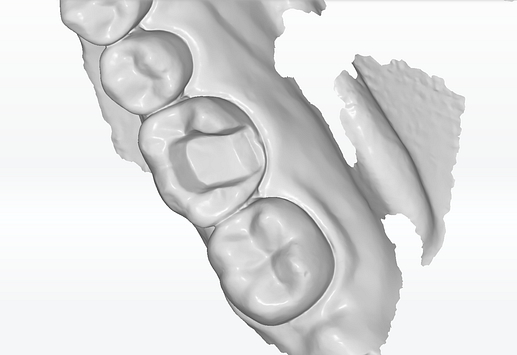We know how much anticipation our iDD Compares series receives, so I’m glad to announce its return for 2024.
Today, we’re looking at comparing one of the best low-cost intraoral scanner (IOS) devices on the market to the most premium IOS device: SHINING 3D Dental’s Aoralscan 3 vs. Dentsply Sirona CEREC Primescan

The Aoralscan 3 by SHINING 3D Dental is a scanner that is gaining popularity from China and has been a frequent subject of interest for reviews since its launch on September 12, 2021.
The Aoralscan 3 stands out as an economical, scanner-only option at $10,999 USD*. Notably, it features significantly superior software compared to many other Chinese scanners iDD has previously evaluated. In fact, its software quality surpasses that of many well-known scanners in the market.
For avid readers of iDD Compares, you’ll know how we regard CEREC Primescan by Dentsply Sirona as one of the most accurate IOS however, it is also a more costly IOS at around $15,999 USD* for the scanner only (with no CAD).
*Prices may vary based on region, so please check your local distributor for accurate regional pricing.
And for those who follow me on Instagram (@dr.alhassiny), you’ll know I frequently share my day-to-day cases using the CEREC system for my same-day chairside restorations. It is a great workhorse.
So how do these IOS’ from different ends of the pricing spectrum compare to each other? Below, you'll find the results of the individual scans - images of both the color and monochrome scans, exported STLs, tessellated meshes, and close-ups of the prep margins.
We hope by doing so, iDD can assist you in forming your own opinion about these scanners. Now let’s find out!
As always, at the Institute of Digital Dentistry, we're privileged to have the chance to evaluate all our intraoral scanners in real clinical settings, using real cases and patients. This approach enables us to offer an unbiased and truthful assessment of each scanner's performance.
Individual Scans in their Native Software
Each intraoral scanner on the market comes with integrated scanning software. Many of these scanners utilize AI technology to correct scanning errors caused by mobile soft tissues, such as cheeks and tongue.
We can examine how these scanners utilize their inherent software to capture color. The method of color capture differs from one scanner to another, primarily based on the scanner's ability to accurately interpret light reflections from the prepared area and adjacent teeth.

The processed color scans of the same tooth preparation were captured using two scanners and previewed in their native software.
When we look at the scans, we can see that the SHINING 3D Aoralscan 3 scan is more photo-realistic than the scan by CEREC Primescan. This is characteristic of Chinese intraoral scanners which go for this style of texture. Whereas the Primescan has a more cartoon style texture and colouring.
Now, it is truly personal preference, which you think looks better. Concerning the color captured by both scans, the Primescan scan shows more depth and detail.
Interesting I ran a few instagram polls and most people seem to prefer photo-realstic scan textures.

The processed monochromatic scans of the same tooth preparation were captured using two scanners and previewed in their native software.
Previewing scans in monochrome can also be done using their built-in software.
These monochromatic scans offer a clearer perspective of the prep's quality without the distraction of different color hues and the texture the software decides to apply.
Monochrome scans are useeful for identifying any scanning problems that might not be as evident in colored views. This is evident when viewing the Aoralscan 3 and Primescan monochrome scans, as more detail can be observed in the latter scan.
Exported Scans in Third-Party Software
Most intraoral scanners are designed with an open architecture, allowing for the export of scans for laboratory transmission. Typically, these exports are available in one of three file formats: STL, PLY, or OBJ.
Note: Aoralscan 3 can export all three file formats - STL, PLY, and OBJ, whereas CEREC Primescan is only capable of exporting files in an STL format
STL files yield monochromatic scans, whereas OBJ and PLY formats can preserve color and texture details. However, it's important to remember that not every intraoral scanner can export in the OBJ and PLY formats while exporting in STL format is a universal standard across the industry.
Various CAD software solutions, such as Medit Design, can view and work with the exported STL, PLY, or OBJ files, where dental labs use such software to design their dental restorations. This method ensures an unbiased evaluation of the scans, independent of the specific scanner's built-in software. As a result, it avoids any tailored color adjustments or enhanced surface rendering that the original proprietary software might offer.
In this iDD comparison, the scanners evaluated can export scans in the following formats:
Intraoral Scanner | STL | PLY | OBJ |
|---|---|---|---|
SHINING 3D Aoralscan 3 | 6.2 MB | 6.2 MB | 8.6 MB |
CEREC Primescan | 15.3 MB | - | - |

Based on the MB sizes of the various file formats, we can see that Primescan’s STL file is the largest - at 15.3 MB.
This is more than double the size of the same file format of Aoralscan 3. We can safely say that the Primescan scan likely captures more detail from the color and monochrome scans and the file format size compared to the Aoralscan 3 scan.
In Medit Design, we can also have a detailed examination of the intricacy of data captured in each scan.
Prep margin lines can be examined during this stage. IOS devices cast a light onto the surfaces intended for scanning. The light must reflect into the IOS from the surface being scanned for a precise scan. If the light instead penetrates the surface without reflecting, it leads to inaccuracies in the scan.

Generally, IOS devices face challenges with equi or subgingival preparations, although these can be mitigated with appropriate tissue and moisture management. For this case, you can observe that the palatal margin line is much crisper and more defined in the Primescan scan than the Aoralscan 3 prep margin.

When we look closer at the preps and their tessellated mesh, the scan captured using the CEREC Primescan is denser than the scan captured using the Aoralscan 3.
We can also refer to the exported file sizes table in the previous section, where the mesh density supports the scan's large STL file size of 15.3 MB. As the tessellated mesh produced by the CEREC Primescan is much denser than the tessellated mesh produced by the Aoralscan 3, there is more data or “tessellated triangles” within the mesh to export in contrast to the smaller STL file size of the Aoralscan 3 scan of 6.2 MB, hence the lesser “tessellated triangles.”
With this being said, there are yet to be any studies investigating the clinical significance of mesh density.

CEREC Primescan was allocated as our point of reference in which we can view the deviations of the scans when aligned using Medit Design’s Deviation Display mode. Based on the colored deviation key, we can see minimal to no deviation of the scans when aligned.
Within the same Deviation Display mode, we can view the aligned scans in a sectional view in which we can see minimal differences between the scans.
One last interesting note is that Shining 3D Aoralscan 3 has a toggle for 'HD mode' when scanning. This is becoming more common in intraoral scanners but not found in the Primescan.
See the differences below, left is non-HD scan and right is an HD scan. Although the definition is clearer, this does not impact seem to impact scan accuracy.


Conclusion
It is important to remember that the precision in capturing the details of the restoration preparation may vary slightly based on the combination of the clinician's scanning technique and the specific scanner used. This variation can potentially influence the final outcome of the dental lab technicians' restoration margin.
Currently there is no major difference in the deviation when comparing scans when using high price intraoral scanners and low cost intraoral scanners for a single crown. They all seem to do the job and scan well.
Which IOS or type of cases would you like to feature in an iDD Compares?









